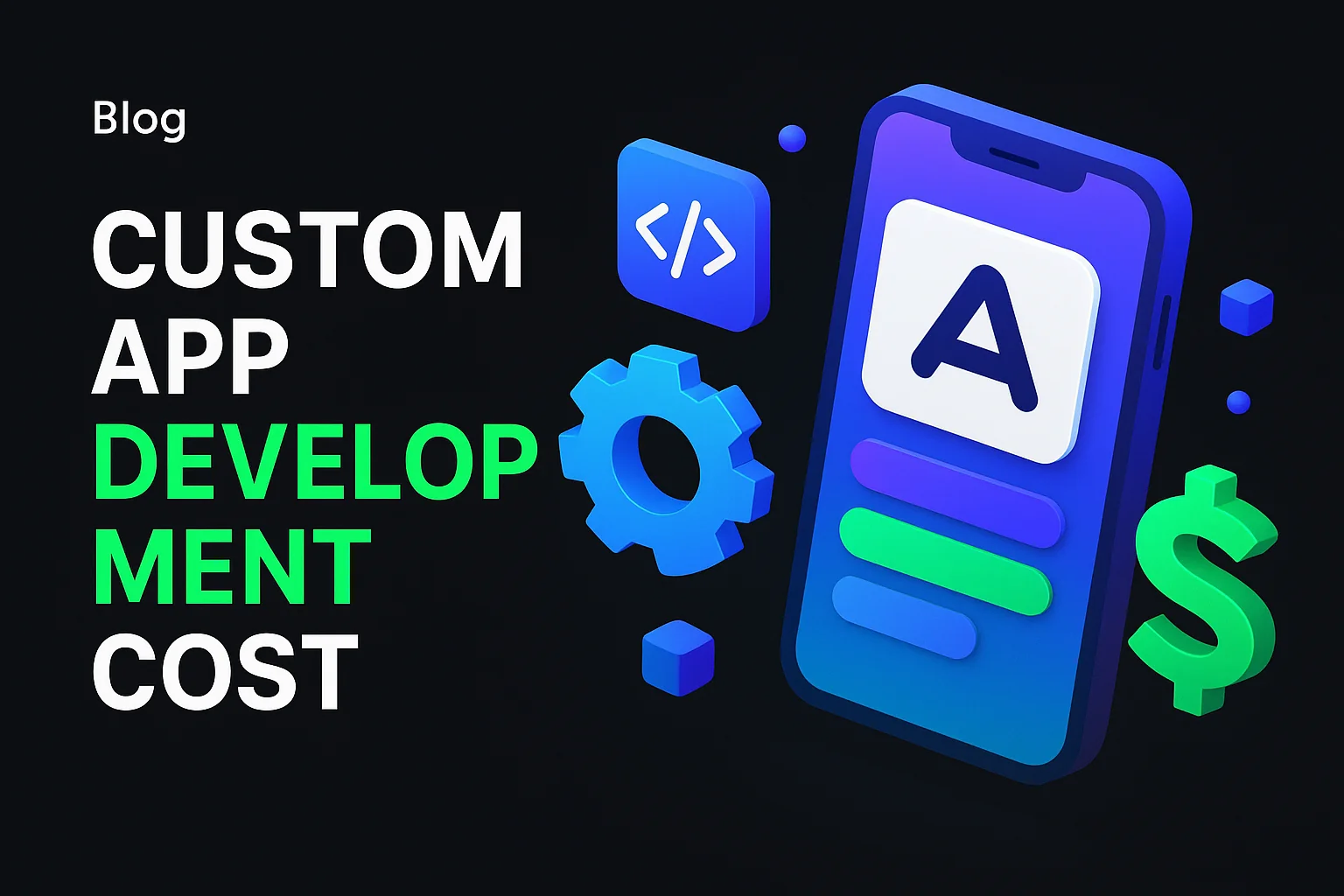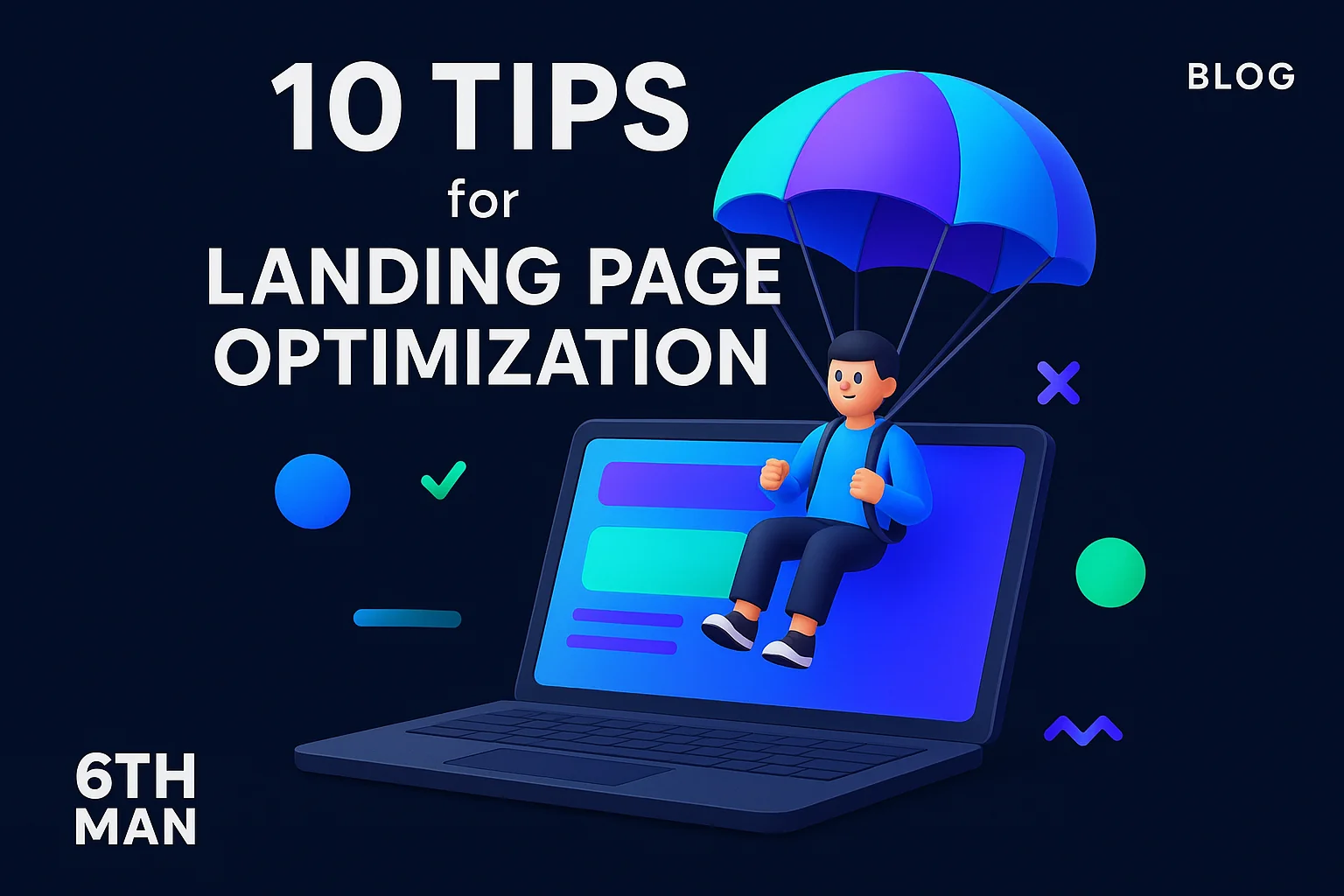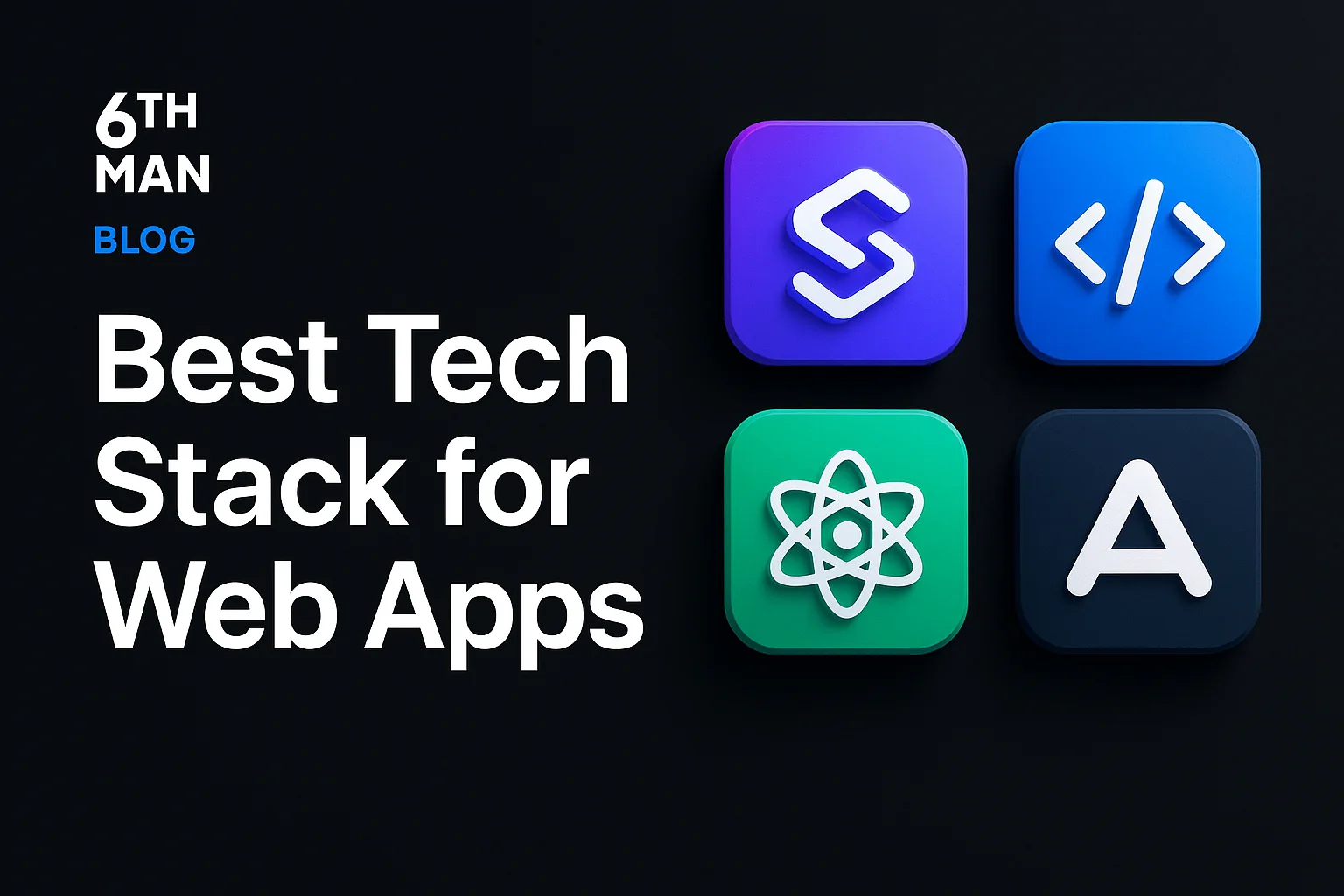Building an app is not a guessing game. Founders, marketing leads, and procurement teams need clear budget ranges, timelines, and drivers to make smart decisions. Whether you're launching an MVP or scaling a full product, custom app development cost depends on scope, design, tech complexity, team composition, and maintenance. Below, we unpack the bands, drivers, and tactics to help you estimate, reduce, and manage app development spend with confidence.
Custom app development cost: Quick summary
Most businesses want three things fast: ballpark price, what influences it, and how to lower it. Here's the short version for busy stakeholders.
Small custom apps start at €3,000. They handle MVPs, prototypes, and single-function tools. Web or mobile apps with integrations land in the €5,000 to €10,000 bracket, perfect for dashboards, CRM links, or payment connections. Full cross-platform applications cost €15,000 to €25,000 or more, pairing custom UX, secure backends, and advanced features. For ongoing work, on-demand partnerships begin at €1,000 per month, letting you iterate and scale without rebuilding.
Real price is shaped by scope, design rigor, third-party services, backend needs, team expertise, QA intensity, and location. Compare MVP vs full product timelines: MVPs typically deliver in four to eight weeks; full builds stretch eight to sixteen weeks or longer. Front-load your planning with a simple hour × rate + third-party + contingency model.
Pricing overview
At 6th Man, we keep things simple and transparent. Whether you're launching a small app or building a full cross-platform product, our pricing scales with your needs, not your tech stack.
Small custom apps: From €3,000
Ideal for simple tools, prototypes, or MVPs with limited features. Think single-page admin panels, booking forms, or lightweight internal utilities. These builds use lean frameworks, skip complex integrations, and focus on delivering proof-of-concept fast. You validate the idea without overspending.
Web or mobile apps with integrations: €5,000 to €10,000
Perfect for businesses that need custom dashboards, API connections, or CRM integrations. This range covers moderate complexity: user authentication, third-party payment gateways, and data syncs. You get tailored business logic without the overhead of native mobile builds or real-time backends.
Full cross-platform applications: €15,000 to €25,000+
Best for scalable mobile and web builds with custom UX/UI, secure backend architecture, and advanced features. Expect multi-user roles, push notifications, offline capabilities, or machine learning hooks. These projects span discovery, design, development, testing, and deployment across iOS, Android, and browser platforms.
Ongoing development or optimization: From €1,000/month
For ongoing development or optimization, we offer flexible on-demand partnerships starting from €1,000 per month so you can keep improving, scaling, and growing without rebuilding from scratch. This retainer covers bug fixes, A/B tests, new micro-features, and incremental scaling. It's a plug-and-play model that behaves like an in-house team without the full-time salaries.
What drives custom app development cost
Six core drivers shape final price. Master them, and you'll anticipate overruns and make informed trade-offs.
Scope and feature complexity
Number of screens, user flows, and feature depth matter most. A login, profile, and list view stays cheap. Add real-time chat, multi-language support, or geolocation, and hours multiply. Define your must-haves before kickoff; vague scope breeds scope creep.
Design and user experience
Off-the-shelf UI kits save time and money. Custom illustrations, micro-animations, or brand-matched design systems push cost up. Factor wireframing, prototyping, user testing, and revision rounds. High-fidelity design can double or triple the design phase budget.
Integrations and third-party services
Every external API, payment processor, CRM, or marketing automation hook adds setup, testing, and maintenance. Stripe integration is straightforward; connecting legacy ERP or custom enterprise systems demands deep discovery, mapping, and error handling. Licensing fees for third-party SaaS tools sit outside your dev budget.
Backend, data, and security
Serverless functions versus dedicated infrastructure. SQL versus NoSQL. GDPR-compliant storage, encryption at rest, audit logs. Your data model, user scale, and compliance requirements dictate backend architecture. Secure, scalable backends require senior developer time and thorough testing, especially for finance, health, or B2B SaaS.
Team composition and location
Senior devs in Western Europe charge €70 to €120 per hour; Eastern Europe or Asia Pacific can halve that rate. Onshore teams communicate faster and understand local regulations; offshore teams stretch budget but introduce timezone lag and cultural nuance. Balanced teams mix senior strategy, mid-level execution, and junior QA.
Testing, QA, and compliance
Unit tests, integration tests, end-to-end automation, accessibility audits, security pen tests. Industry regulations like GDPR, PSD2, or HIPAA add review layers. Skipping QA cuts cost short-term but inflates post-launch firefighting. Budget 15–25% of dev time for QA and compliance.
MVP vs full product: Custom app development cost breakdown
Deciding between an MVP and a full product is a strategic pivot. MVPs prove demand; full products scale demand.
MVP: Goals, typical features, and cost bands
Goal: validate core value with minimal features. Features: authentication, single user role, basic CRUD operations, simple UI, limited integrations. Timeline: four to eight weeks. Cost: €3,000 to €10,000. An MVP answers "Will anyone use this?" It's a hypothesis test, not a market launch.
Full product: Scaling, advanced features, and cost bands
Goal: deliver a feature-complete experience ready for growth. Features: multi-role permissions, real-time sync, robust error handling, analytics, admin dashboards, onboarding flows, help docs, push notifications. Timeline: eight to sixteen weeks or longer. Cost: €15,000 to €50,000+. You're building for retention, scale, and competitive differentiation.
Timeline expectations by stage
Discovery and planning take one to two weeks. Design adds two to four weeks depending on fidelity and revisions. Development consumes the bulk: MVPs ship in four to six weeks of dev; full products stretch ten to twelve weeks. Testing runs parallel but intensifies in the final quarter. Add deployment, app store approval, and go-live checks, and you're looking at an extra week or two buffer.
How to estimate custom app development cost
Skip the mystery. Use a structured model to forecast spend and hold your team accountable.
A simple estimation framework (hours × rate + third-party + contingency)
Start with scope: list features. Estimate hours per feature (front-end, back-end, design, QA). Multiply total hours by blended hourly rate. Add third-party service costs (hosting, licenses, API fees). Pad with 15–20% contingency for unknowns. Formula: (Hours × Rate) + Third-party + (Total × 0.15). This gives you a working budget, not a final invoice.
Example estimate: B2B dashboard
Feature set: user login, data visualization with charts, CSV export, role-based access. Hours: 40 (front-end), 50 (back-end), 20 (design), 15 (QA). Blended rate: €80. Calculation: (125 × 80) + 200 (hosting) + (10,200 × 0.15) = €12,730. Budget €13,000 to €15,000 depending on revisions and extras.
Example estimate: E-commerce integration with CRM and payments
Feature set: product catalogue, Stripe checkout, Mailchimp sync, order history, admin panel. Hours: 60 (front-end), 80 (back-end), 30 (design), 25 (QA). Blended rate: €75. Calculation: (195 × 75) + 500 (licenses + hosting) + (15,125 × 0.15) = €17,394. Round to €18,000 to €20,000 for safety.
Ways to reduce custom app development cost
Cut spend without cutting corners. These tactics preserve quality while managing budget.
Prioritise features and ship in phases
Launch with the 20% of features that deliver 80% of value. Use feedback to steer the next phase. Phased builds keep cash flow manageable, reduce time-to-market, and minimize wasted effort on unused features. Pitfall: skipping the MVP mindset and building everything upfront.
Choose cross-platform smartly
React Native or Flutter let you share one codebase across iOS and Android. Savings hit 30–40% versus dual native builds. Trade-off: slightly lower performance for graphics-intensive apps. If your UX is standard CRUD or form-heavy, cross-platform wins on cost and speed.
Reuse existing platforms and APIs
Don't rebuild authentication, payments, or email delivery. Integrate Auth0, Stripe, and SendGrid. Open-source libraries handle charting, maps, and UI components. You pay licensing fees but save weeks of dev time and ongoing maintenance.
Use design systems and component libraries
Material UI, Ant Design, or Tailwind CSS offer pre-styled components. Designers focus on layout and branding instead of button states. Outcome: faster front-end dev, consistent UX, easier handoff. Result: 20–30% reduction in design and front-end hours.
Ongoing costs and on-demand support
Launch is a milestone, not the finish line. Plan for maintenance, hosting, and iterative improvements.
Typical maintenance percentages and what they cover
Annual app maintenance cost averages 15–25% of initial build. That covers bug fixes, OS updates, security patches, dependency upgrades, performance monitoring, and minor feature tweaks. Hosting, CDN, and third-party SaaS subscriptions sit on top. Skipping maintenance compounds technical debt and exposes vulnerabilities.
6th Man on-demand partnership from €1,000/month
We offer flexible partnerships from €1,000 per month for continuous optimization, bug resolution, and feature iteration. This model works like an embedded team: you define the backlog, we execute, report, and adapt. No long-term lock-in, no hidden fees. You scale support up or down as your product matures and user base grows.
Why work with 6th Man for custom app development cost and delivery
Traditional agencies charge for hours, not outcomes. We plug in as your embedded development team and move fast.
Embedded team model and senior expertise
Our developers, designers, and strategists integrate into your workflow. You get Slack channels, sprint reviews, and direct access to senior talent, not account managers filtering requests. We've built real-time auction apps, e-commerce platforms, and B2B dashboards. Cross-vertical experience means we anticipate your edge cases.
Transparent pricing and predictable outcomes
Fixed monthly retainers or project-based quotes. No surprise markups, no media commissions. You know what you're paying before kickoff. We scope, estimate, and deliver within tolerance. Overruns require your approval; we don't bill for our mistakes.
Short case example: B2B dashboard delivered fast
A logistics SaaS needed a custom dashboard to visualize shipment data for enterprise clients. Requirement: user roles, API integration with their legacy system, export to PDF. Timeline: six weeks. Budget: €12,000. Outcome: launched on time, zero critical bugs post-release, client onboarded first enterprise account within two weeks. Approach: we phased feature delivery, prioritized the data pipeline, and reused a React component library to accelerate front-end work.
Next steps and contact 6th Man
Estimating custom app development cost starts with clarity on scope, timeline, and drivers. Whether you need a lean MVP from €3,000 or a full cross-platform product in the €15,000 to €25,000 range, transparent pricing and senior expertise make the difference between hitting milestones and bleeding budget.
At 6th Man, we combine embedded teamwork, flat pricing, and a track record in custom mobile and web application development. Ready to turn your idea into a shipped product? Get in touch and let's scope your build.




